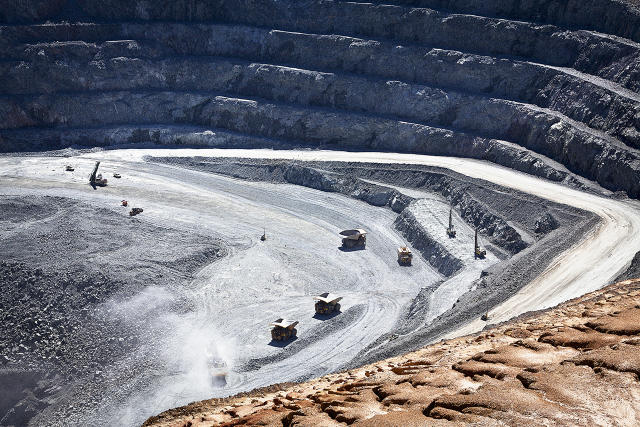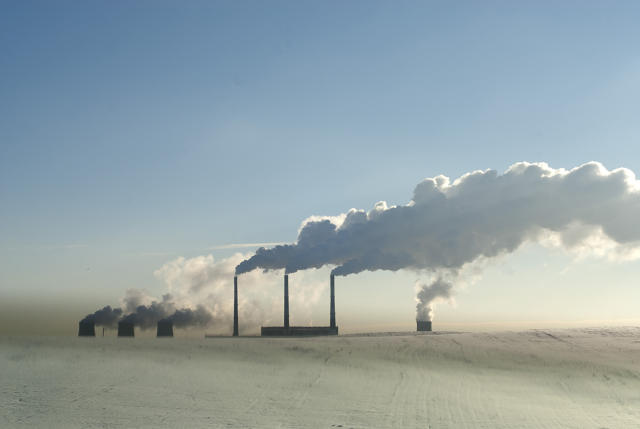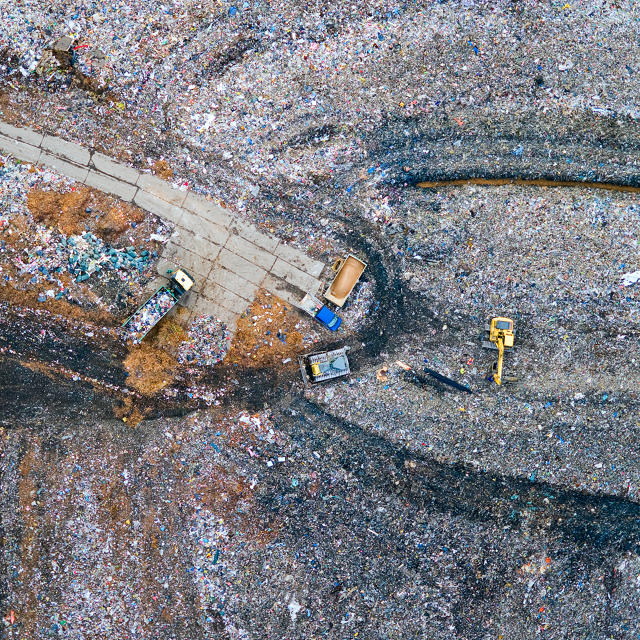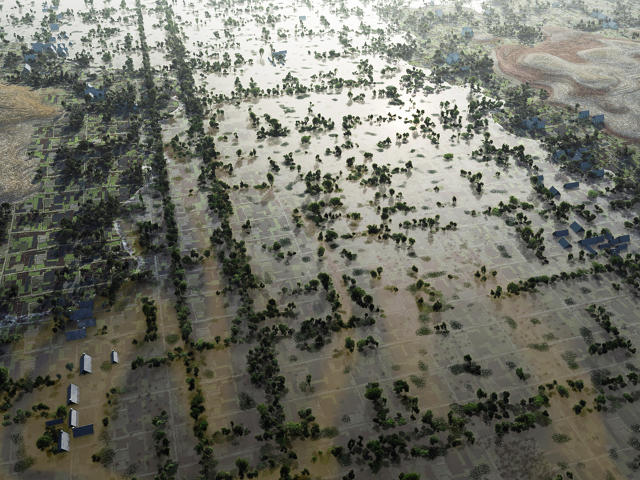Original post by:
JESSICA LEBER a staff editor and writer for Fast Company's Co.Exist. Previously, she was a business reporter for MIT’s Technology Review and an environmental reporter at ClimateWire
---------------------------------------------------------------------------------------------------------------------
Humans have altered the planet so much that we've created a new geological age—the Anthropocene. Millennia from now, this is how scientists will learn about what we did.
JESSICA LEBER a staff editor and writer for Fast Company's Co.Exist. Previously, she was a business reporter for MIT’s Technology Review and an environmental reporter at ClimateWire
---------------------------------------------------------------------------------------------------------------------
Humans have altered the planet so much that we've created a new geological age—the Anthropocene. Millennia from now, this is how scientists will learn about what we did.
It’s not far-fetched to imagine humanity's (hopefully far-off) extinction. Maybe an asteroid strikes Earth, and we’ll go the way of the dinosaurs. Perhaps the apocalypse will be our own doing, say from a global pandemic or thermonuclear war.
What clues would the geologists of some future highly intelligent species find of our own existence? Would we just be your average jumble of intriguing fossils? Or would they notice the ways that human population growth, technology, and resource consumption have fundamentally altered the Earth’s planetary systems in a way no species has done before ours?

Jason Benz Bennee via Shutterstock
Geologists divide Earth’s 4.5 billion-year history into a time scale that isn’t marked by a calendar, but by significant changes to the planet that can be seen in the geologic record. For the last 12,000 years—since the end of the last Ice Age, when glaciers melted and sea level rose 120 meters—we have lived in the Holocene epoch. But more recently, scientists and ecologists have proposed that we’ve transitioned into a new demarcation defined entirely by the ways that humans have altered the land, oceans, air, and other fellow lifeforms. Appropriately, this new epoch is named the "Anthropocene."
The Anthropocene has been a useful way of framing the sheer scale and scope of humanity’s environmental impact. But as far as the official geological time scale goes, people can’t just add epochs when they feel like it. What’s needed is a catalog of concrete, lasting signs that would show a scientist even hundreds of millions of years from now that now—today—is a time worth noting.
A recent study in the journal Science has tallied all the evidence and declared the Anthropocene is real. A team of 24 co-authors, led by Colin Waters of the British Geological Survey, say that the Earth’s geological community should go about making it official. Though as geologists are wont to do, they recommend caution regarding likely political fallout:
"Quiet unlike other subdivisions of geological time, the implications of formalizing the Anthropocene reach well beyond the geological community," they write. "Not only would this represent the first instance of a new epoch having been witnessed firsthand by advanced human societies, it would be one stemming from the consequences of their own doing."
Here’s a look at all the ways that humans have put their permanent stamp on the planet:
FUTURE TECHNO-FOSSILS
Human artifacts, such as pottery, glass, brick, and copper, can be found in the earth’s record for thousands of years. But more recent man-made deposits—the products of mining, landfills, construction, and urbanization—"contain the greatest expansion of new materials" since the Earth’s atmosphere filled with free oxygen 2.4 billion years ago. In essence, humans are creating new forms of "rock" that will persist for a long time to come. These include: aluminum products, which was almost unknown to the planet before the 1800s; concrete, the primary building material since World War II; and plastic, an unnatural, ubiquitous material that resists decay and will leave an identifiable fossil and geochemical records.
Human artifacts, such as pottery, glass, brick, and copper, can be found in the earth’s record for thousands of years. But more recent man-made deposits—the products of mining, landfills, construction, and urbanization—"contain the greatest expansion of new materials" since the Earth’s atmosphere filled with free oxygen 2.4 billion years ago. In essence, humans are creating new forms of "rock" that will persist for a long time to come. These include: aluminum products, which was almost unknown to the planet before the 1800s; concrete, the primary building material since World War II; and plastic, an unnatural, ubiquitous material that resists decay and will leave an identifiable fossil and geochemical records.
THE TRANSFORMATION OF THE LAND (AND OCEAN) SURFACE
Humans have modified more than 50% of Earth’s land surface, creating strange and unique sediment markers spread across the planet. These include landfills, buildings, mine tailings, and farm fields. This even extends to the ocean, through trawler fishing, sand and gravel extraction and dredging, and offshore oil drilling. Consider this: Societies currently extract three times more earth material for mining than is moved by all of the Earth’s rivers in the same timeframe, and over the last 60 years, we have also been building enormous dams—which disrupt sediment flow to the ocean—at a rate of one a day.

URALSKIY IVAN via Shutterstock
EVIDENCE FROM THE NUCLEAR AGE
The era of nuclear weapons testing, beginning in the 1940s, is probably the most globally widespread and abrupt marker of an Anthropogenic era, according to the study. Therefore, one proposed "start" of the Anthropocene could be the detonation of the Trinity atomic device in New Mexico on July 16, 1945. Or, to consider a more global fallout from thermonuclear weapons (rather than simple fission bombs), the "start" could be when this kind of testing began in 1952 or peaked in 1961. Either way, the signature, in the excess of certain radioisotopes in the soil, is clear.
The era of nuclear weapons testing, beginning in the 1940s, is probably the most globally widespread and abrupt marker of an Anthropogenic era, according to the study. Therefore, one proposed "start" of the Anthropocene could be the detonation of the Trinity atomic device in New Mexico on July 16, 1945. Or, to consider a more global fallout from thermonuclear weapons (rather than simple fission bombs), the "start" could be when this kind of testing began in 1952 or peaked in 1961. Either way, the signature, in the excess of certain radioisotopes in the soil, is clear.
THE EXTINCTION CRISIS
Mass extinctions—where about 75% of Earth’s species die off in a certain time frame—have happened five times in Earth’s history, most famously with the asteroid that wiped out the dinosaurs. If current rates of habitat loss and exploitation keep up, we will have the sixth mass extinction—this one caused by humans. And the very makeup of species is changing, with the spread of invasive species and increase in livestock populations and agriculture affecting what and where fossils would be found. Unlike the abrupt timestamp of nuclear fallout, this signature would show up spread out across many centuries, perhaps as far back as 1500.
Mass extinctions—where about 75% of Earth’s species die off in a certain time frame—have happened five times in Earth’s history, most famously with the asteroid that wiped out the dinosaurs. If current rates of habitat loss and exploitation keep up, we will have the sixth mass extinction—this one caused by humans. And the very makeup of species is changing, with the spread of invasive species and increase in livestock populations and agriculture affecting what and where fossils would be found. Unlike the abrupt timestamp of nuclear fallout, this signature would show up spread out across many centuries, perhaps as far back as 1500.

NASA
THE EARTH’S CHANGING CHEMISTRY
Starting in the late 1940s, humans began releasing a mass quantities of distinct, new chemicals into the air and earth: PCBs (now banned as toxic), pesticides, lead (mostly from leaded gasoline), and of course, the chemical residues of fossil fuel combustion. Quantities of fixed nitrogen and phosphorous—the key ingredients of fertilizer—have doubled in the past century; human processes may have had the largest impact on the nitrogen cycle in the last 2.5 billion years. More recently, trace and rare earth metals that are used in electronics and car engines have been increasingly mined and dispersed in the environment—and so would appear in geologic record in new ratios that would be distinct from pre-industrial times.
Starting in the late 1940s, humans began releasing a mass quantities of distinct, new chemicals into the air and earth: PCBs (now banned as toxic), pesticides, lead (mostly from leaded gasoline), and of course, the chemical residues of fossil fuel combustion. Quantities of fixed nitrogen and phosphorous—the key ingredients of fertilizer—have doubled in the past century; human processes may have had the largest impact on the nitrogen cycle in the last 2.5 billion years. More recently, trace and rare earth metals that are used in electronics and car engines have been increasingly mined and dispersed in the environment—and so would appear in geologic record in new ratios that would be distinct from pre-industrial times.
THE CARBON EMISSIONS SPIKE
One way that geologists can tell the Earth’s past atmospheric composition is by analyzing air bubbles in ice that has stayed frozen from a long time ago. For further back, they can also look at the chemistry of tree rings, limestones, and fossils, which will incorporate signatures of the Earth's atmosphere from the time they were formed. Future geologists will certainly note the extremely fast rise in CO2 levels since 1850—far faster than the carbon dioxide increase that happened when the Earth transitioned out of the last Ice Age.
CLIMATE CHANGE AND SEA LEVEL RISE
Many people don’t realize it, but due to small changes in the Earth’s orbit, the planet actually cooled between 1250 and 1800, a time period called the Little Ice Age. Soon after, the trend of fossil fuel emission-induced warming took over.
Today, average global sea levels are higher than at any point in the last 115,000 years—a fact that will be seen by future geologists who study the sediments of this time period. Because climate change and sea level rise is relatively slow, however, these changes are still happening today and will become more noticeable in the centuries to come. Even if we drastically reduce emissions, by 2070, the Earth is likely to be hotter than it has been in 125,000 years.
Modern humans emerged as a species only 200,000 years ago. But since the industrial revolution, the scale of the changes that humans have made to the planet are vast, even when viewed in the context of Earth’s long history. Ironically, the Anthropocene may be a place where humans don’t want to live.


No comments:
Post a Comment